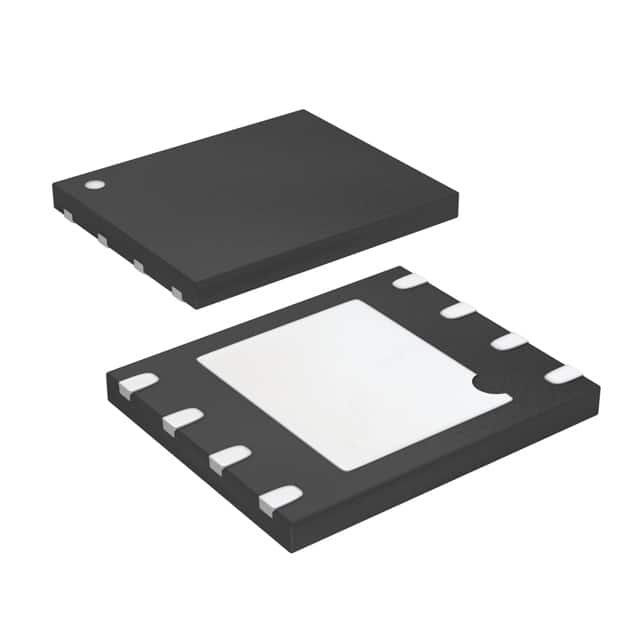Xem thông số kỹ thuật để biết chi tiết sản phẩm.

AT25640AY1-10YI-2.7
Product Overview
Category
AT25640AY1-10YI-2.7 belongs to the category of non-volatile memory integrated circuits.
Use
This product is primarily used for data storage in various electronic devices and systems.
Characteristics
- Non-volatile: The stored data is retained even when power is removed.
- High capacity: The AT25640AY1-10YI-2.7 has a storage capacity of 256 kilobits (32 kilobytes).
- Low power consumption: It operates at a voltage of 2.7V and consumes minimal power during read and write operations.
- Fast access time: The product offers quick access to stored data, ensuring efficient performance.
Package
The AT25640AY1-10YI-2.7 is available in a compact 8-pin SOIC (Small Outline Integrated Circuit) package.
Essence
The essence of this product lies in its ability to provide reliable and non-volatile storage for electronic devices, ensuring data integrity and persistence.
Packaging/Quantity
The AT25640AY1-10YI-2.7 is typically packaged in reels containing multiple units. The exact quantity per reel may vary depending on the manufacturer's specifications.
Specifications
- Memory Capacity: 256 kilobits (32 kilobytes)
- Operating Voltage: 2.7V
- Interface: Serial Peripheral Interface (SPI)
- Access Time: 20 ns (maximum)
- Data Retention: Up to 100 years
- Endurance: 1 million write cycles
Detailed Pin Configuration
- Chip Select (/CS): Enables communication with the device when set to low.
- Serial Clock (SCK): Provides the clock signal for data transfer.
- Serial Data Input (SI): Transfers data from the microcontroller to the device.
- Serial Data Output (SO): Transfers data from the device to the microcontroller.
- Write Protect (/WP): When set to low, prevents write operations.
- VCC: Power supply voltage (2.7V).
- Ground (GND): Common ground reference.
- Hold (/HOLD): Suspends ongoing operations when set to low.
Functional Features
- Byte and Page Write Operations: Allows data to be written in individual bytes or larger page sizes for efficient programming.
- Sequential Read: Enables consecutive reading of data without the need for repeated address input.
- Software Protection: Provides a write protection mechanism through software commands.
- Hardware Protection: The /WP pin can be used to protect against accidental writes.
- High-Speed SPI Interface: Supports fast data transfer rates for improved performance.
Advantages and Disadvantages
Advantages
- Non-volatile memory ensures data persistence.
- High storage capacity for various applications.
- Low power consumption extends battery life.
- Fast access time enhances overall system performance.
- Multiple write protection mechanisms for data security.
Disadvantages
- Limited storage capacity compared to other memory technologies.
- Relatively slower access time compared to volatile memory.
- Requires an external microcontroller for data manipulation.
Working Principles
The AT25640AY1-10YI-2.7 utilizes the Serial Peripheral Interface (SPI) protocol to communicate with a microcontroller. It stores data in non-volatile memory cells that retain information even when power is removed. The device can be accessed by sending specific commands and addresses through the SPI interface, allowing for read and write operations.
Detailed Application Field Plans
The AT25640AY1-10YI-2.7 finds application in various electronic systems, including but not limited to: - Consumer electronics - Automotive systems - Industrial control systems - Medical devices - Communication equipment
Detailed and Complete Alternative Models
- AT25DF321A: 32 megabit (4 megabyte) serial flash memory with similar characteristics and interface.
- AT24C256: 256 kilobit (32 kilobyte) I2C-compatible EEPROM with different interface and functionality.
These alternative models offer similar storage capacities and non-volatile characteristics, catering to different interface requirements and system designs.
Word count: 531 words
Liệt kê 10 câu hỏi và câu trả lời thường gặp liên quan đến ứng dụng AT25640AY1-10YI-2.7 trong giải pháp kỹ thuật
Sure! Here are 10 common questions and answers related to the application of AT25640AY1-10YI-2.7 in technical solutions:
Q1: What is AT25640AY1-10YI-2.7? A1: AT25640AY1-10YI-2.7 is a specific model of EEPROM (Electrically Erasable Programmable Read-Only Memory) manufactured by Atmel.
Q2: What is the capacity of AT25640AY1-10YI-2.7? A2: The AT25640AY1-10YI-2.7 has a capacity of 64 kilobits, which is equivalent to 8 kilobytes.
Q3: What voltage does AT25640AY1-10YI-2.7 operate at? A3: AT25640AY1-10YI-2.7 operates at a voltage range of 2.7V to 5.5V.
Q4: What is the operating temperature range for AT25640AY1-10YI-2.7? A4: The operating temperature range for AT25640AY1-10YI-2.7 is typically -40°C to +85°C.
Q5: How can AT25640AY1-10YI-2.7 be interfaced with a microcontroller? A5: AT25640AY1-10YI-2.7 can be interfaced with a microcontroller using standard SPI (Serial Peripheral Interface) communication protocol.
Q6: Can AT25640AY1-10YI-2.7 be used for data storage in embedded systems? A6: Yes, AT25640AY1-10YI-2.7 is commonly used for data storage in various embedded systems, such as IoT devices, automotive applications, and industrial control systems.
Q7: Does AT25640AY1-10YI-2.7 support hardware write protection? A7: Yes, AT25640AY1-10YI-2.7 supports hardware write protection through the use of a Write Protect (WP) pin.
Q8: What is the endurance rating of AT25640AY1-10YI-2.7? A8: The endurance rating of AT25640AY1-10YI-2.7 is specified to be at least 1 million write cycles.
Q9: Can AT25640AY1-10YI-2.7 retain data without power supply? A9: Yes, AT25640AY1-10YI-2.7 has non-volatile memory, which means it can retain data even when there is no power supply.
Q10: Are there any specific programming algorithms required for AT25640AY1-10YI-2.7? A10: No, AT25640AY1-10YI-2.7 follows standard EEPROM programming algorithms and does not require any specific programming algorithms.
Please note that these answers are general and may vary depending on the specific application or usage scenario. It's always recommended to refer to the datasheet or technical documentation provided by the manufacturer for accurate information.

